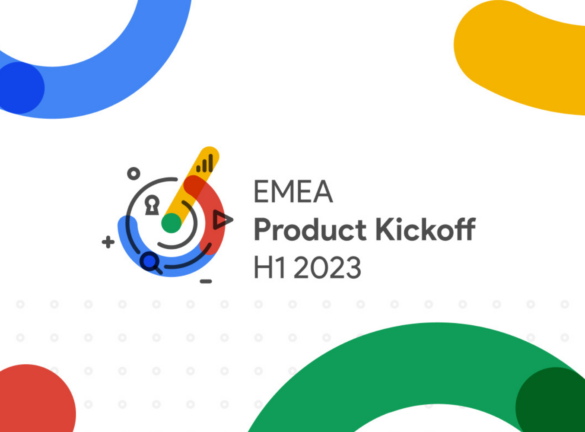
Data Driven Attribution: The Path To Conversion
See our latest attribution article: Understanding Attribution: The Markov Model
Attribution is a topic full of twists, turns and potential pitfalls. It can be very easy to get stuck in a never-ending loop trying to analyse how your marketing campaigns are contributing to your overall performance as well as how they interact with one another. A different perspective can give different results and generally leave you feeling confused about which marketing activities you should keep or cull. Before we dive in to Google’s newest solution to attribution, data driven attribution (DDA) we will take a look at the models currently available to us.
For this blog we will be focusing on DDA within the Google AdWords platform. This is a significant addition to the AdWords platform that has brought simplicity to a complex area as well as the data crunching capabilities of the Google systems.
First things first, what is attribution? Attribution is essentially a set of rules that determines how much credit to assign to each touchpoint in a user’s conversion pathway.
Let’s take a step back and look at attribution as if it were a football game, with the conversion being scoring a goal. In a “last click” attribution model, all the credit for the goal goes to the player that scored it. However, if we took the other 10 players off the pitch that goal most likely wouldn’t have been scored. We need to assign credit to more than just the player who scored the goal in order to see the full value of the team. Traditionally advertisers opt for a “last click” attribution model, however this will always undervalue campaigns that are more effective at assisting conversions. This is especially true for GDN campaigns as well as mid-upper funnel search campaigns.
There are other attribution models available to us within AdWords, each with some merits but also pitfalls.
- First Click – This assigns all the value to the first touchpoint in a conversion pathway. Using our football analogy, this would give all the credit for a goal to the goal keeper.
- Linear – This assigns equal credit to all the touchpoints in a conversion pathway. Every person who touched the ball would get credit for the goal.
- Position based – This assigns 40% credit to the first and last click and 20% to the remaining touch points. The goal keeper and goal scorer would get equal credit with everyone else sharing the rest of the credit.
- Time Decay – This assigns credit to touch points that were closer to the conversion with less value being assigned to ones further away. The players that touched the ball closest to the goal will get the most credit.
Using our football analogy, we can see some of the merits and pitfalls of these models, however what is clear is that none of them consider enough variables to totally capture who the most valuable players were in scoring our goal. This is where Google’s Data Driven Attribution steps in. This is the daddy of all attribution models that promises to increase your conversion numbers whilst decreasing your CPA.
So what is it?
Instead of a pre-defined rule, DDA uses your conversion data to assign value to campaigns by comparing different conversion pathways. By performing split tests, it can see which campaigns appeared in more conversion pathways and which appeared in less and assign a conversion value as a % of total conversion for all the pathways.
In the above example we can see that conversion path 1 has a higher conversion rate and the difference between path 1 and path 2 is the “great tech gifts” campaign. By analysing the differences between conversions pathways Google can attribute, with statistical confidence, that the increase in conversion rate between the two paths was due to this campaign. As the number of variables is different for each account, including number of campaigns, conversion pathway length a time to conversion, this approach means that each DDA model will be unique to every AdWords account!
Considerations
We should flag that there are some aspects to consider with DDA. No model is completely infallible, and this is expected for an out of the box solution.
In order to produce statistically significant results, DDA needs a reasonably sized data set to work with and this is where DDA may fall short for some smaller advertisers. In order to be eligible for DDA you need to have at least 600 conversions & 15,000 clicks in the last 30 days. This is so that there are enough permutations of conversion pathways to rule out the difference being due to chance.
Additionally, DDA only works for search (not GDN/Shopping) and does not work across channels (Organic, Direct, Email…). This is an intra-channel model designed for measuring paid search performance.
So what should you do?
If you have enough volume to activate DDA in your account then it’s as easy as pressing a button. A great advantage to this model as opposed to other custom solutions is that all your data is already in the Adwords platform. This means that AdWords can automatically back date your conversion data and you will start to see fractional conversions applied to your campaigns almost immediately.
Enabling DDA in AdWords is a good start to solving the problem of attribution. With DDA you will see a better picture of which of your AdWords campaigns are contributing to your total conversion numbers. Making optimisations based on this you should see a twofold benefit:
- Increased conversion numbers
- Lower CPAs
Tying this all together with automated bidding strategies such as enhanced CPC and target CPA will help to increase both conversion numbers, CPA and ultimately ROI.
If you are a smaller advertiser, you still have the option to move away from last click to gain more insights into which campaigns are assisting in conversions.
- Position based – This model is good if you are looking for aggressive growth as it values the first touchpoint (when you first interacted with the user) and the last touchpoint (when they converted) the most.
- Time Decay – This model is more suited for conservative growth as it values campaigns closer to a conversion over valuing when you first interacted with a user.
So what’s next?
DDA is available on other platforms including Doubleclick and Analytics 360. These attribution solutions allow you to delve deeper into your attribution models factoring in cross channel and platform conversions, however they do come with a much higher price tag than just a click of a button.
Looking to the future of attribution the Roast Labs team eyes are firmly set on the release of Googles new attribution platform “Google Attribution”. This platform will run cross platform and cross device attribution analysis from multiple data sources. You will be able unify your Analytics, AdWords and various other data sources, run selected attribution models and return reports for actionable optimisations. This will be the go to tool for multi touch point (MTA) attribution and even more significant in 2019 as Google move to offer the best MTA over custom models and 3rd party providers. Watch this space for more details on Google Attribution.








